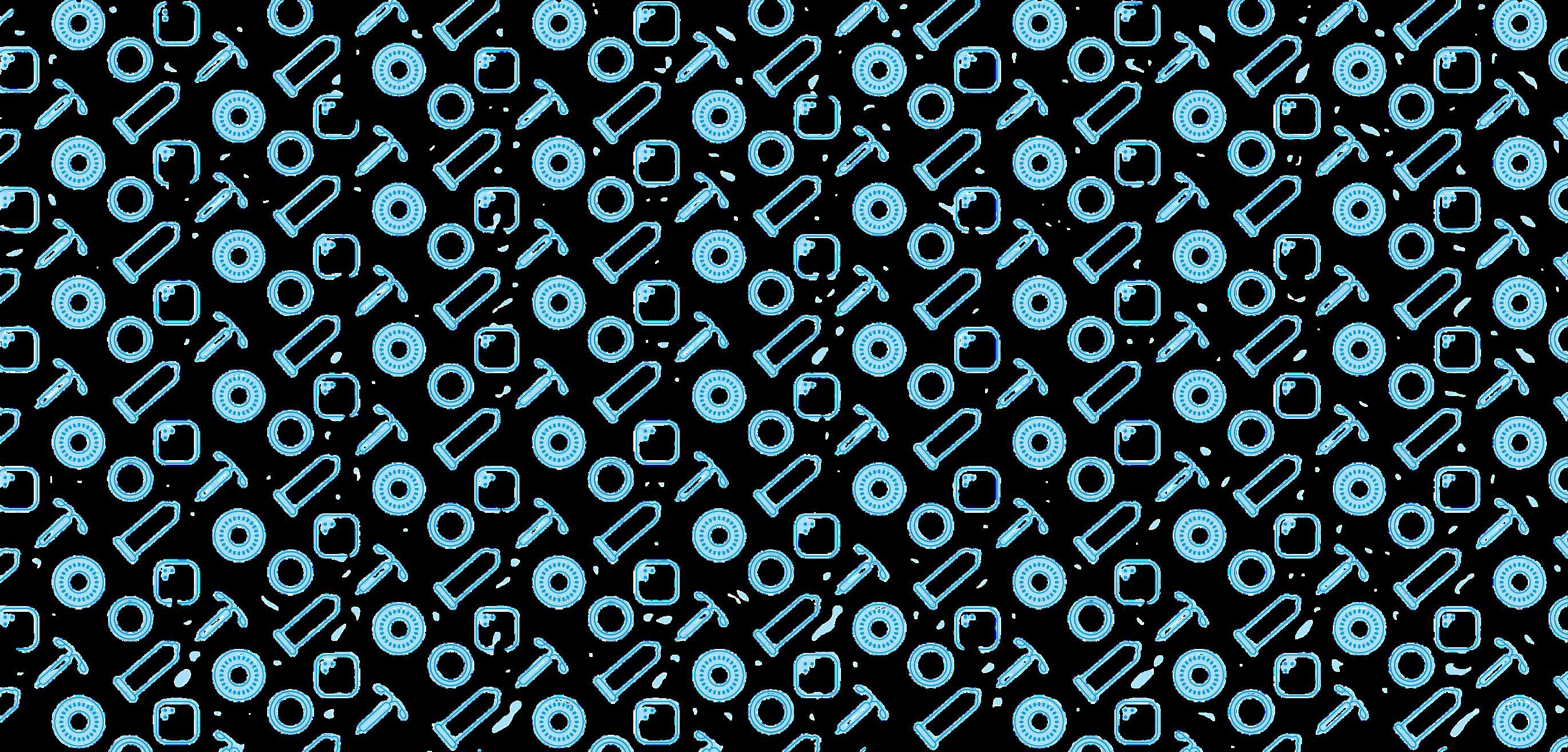




By Aubrey Holdaway NEWS REPORTER
On Sept. 3-6, Utah State University hosted a blood drive in the TSC as part of the 21st annual Blood Battle, a friendly competition with Weber State University to bring in the most blood donations.
Tim Schwen, Red Cross account manager and donor recruitment specialist descrbed turnout on the second day of the drive.
“Things are already going well our first day,” Schwen said.
Attendance continued to grow throughout the week. According to Sarah Martin, Red Cross regional communications manager, USU surpassed its donation goal for the Blood Battle.
“Students and community members donated 363 units of blood, hitting nearly 115% of our goal,” Martin said. “We are deeply grateful to the USU community for their efforts.”
Since the first Blood Battle in 2003, USU and WSU have collected nearly 20,000 units of blood for the American Red Cross.
The Blood Battle moved to WSU Sept. 9-13. Information on who won the competition is pending, but USU has won every year since 2019.
“After a week-long drive at USU, Weber State will attempt to take the trophy for the first time in 5 years,” said Martin.
USU president Elizabeth Cantwell believes the friendly competition between USU and WSU acts as an additional incentive for people to donate.
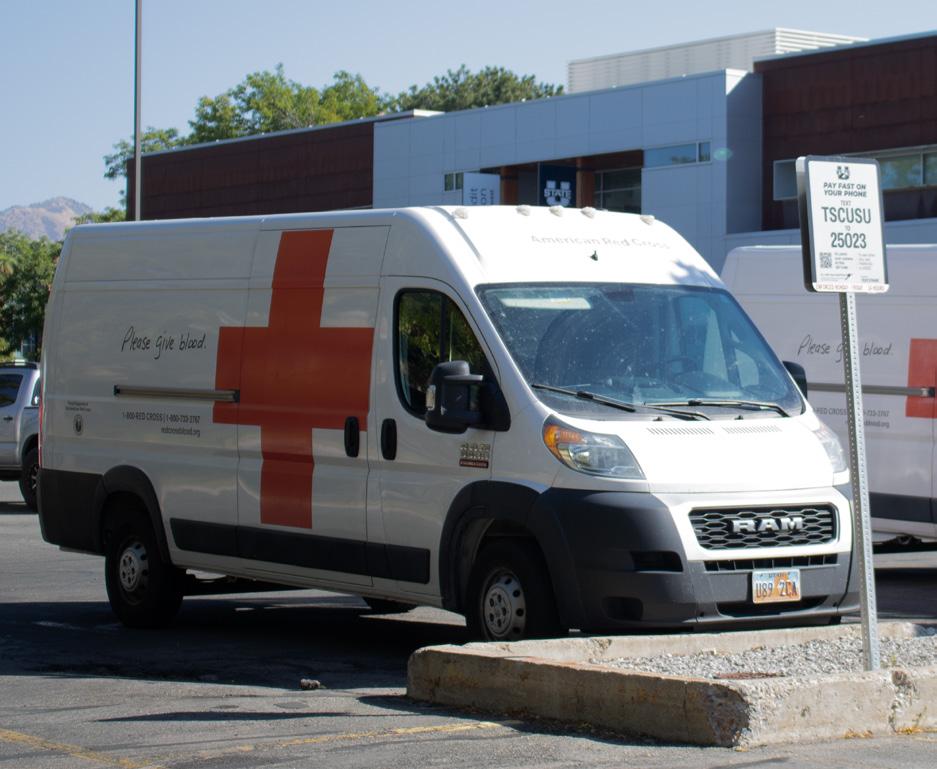
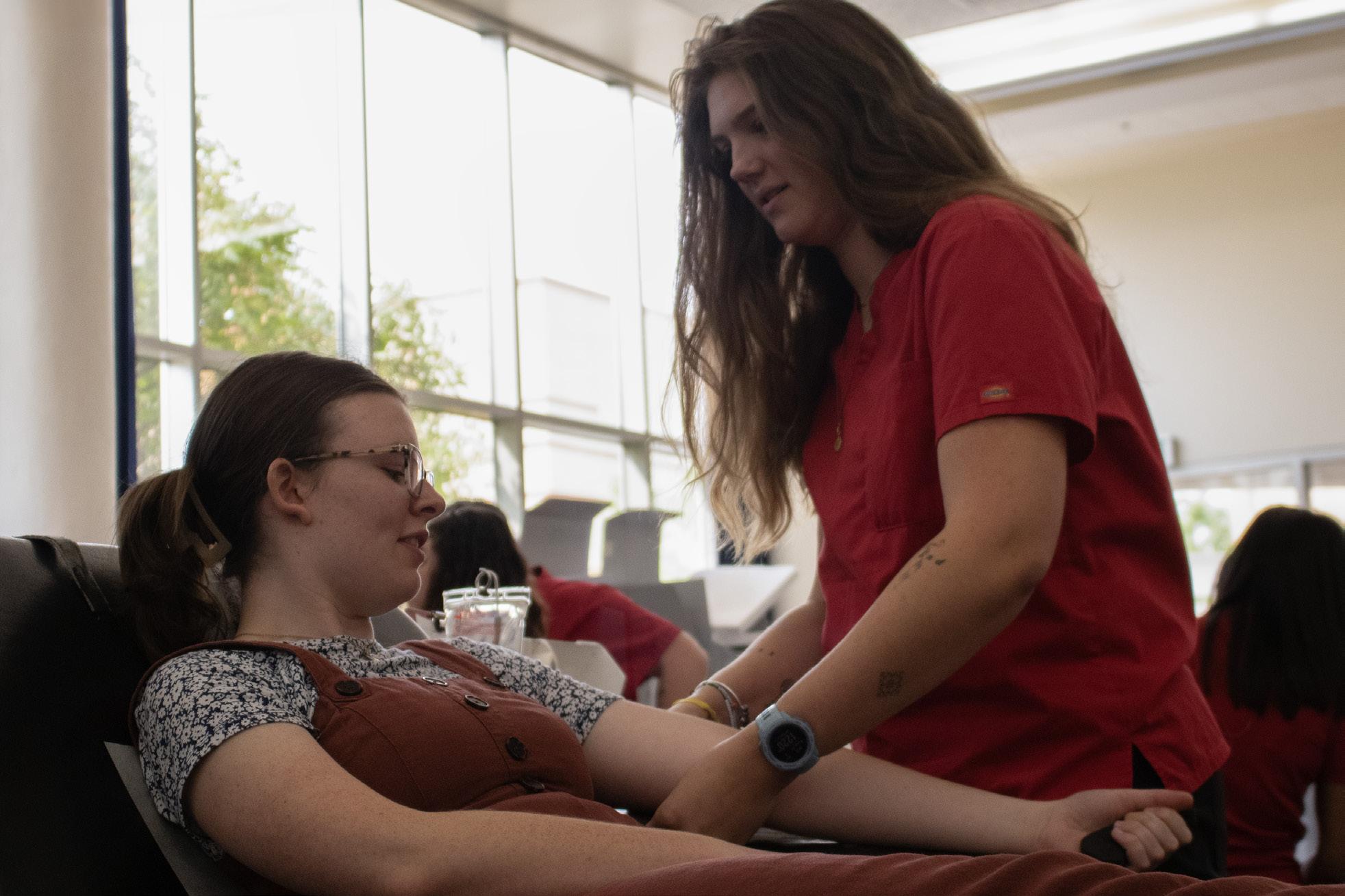
Center, said young adults are vital to increasing blood donation trends.
“We have a desperate, desperate need for young, healthy donors. Many blood donors are retirees, and we lose more and more of them each year due to their own health conditions,” George said. “We need to get the younger generations to be committed.”
Although the Blood Battle is over, Cantwell students to continue to donate blood.
“Now is the time to get into the habit of being a blood donor,” Cantwell said. “It’s a gateway habit to so many other kinds of lifelong service.”
The American Red Cross invites donors of all blood types to address the critical blood shortage in the United States. According to a Red Cross press release, its national blood inventory “plummeted more than 25% in July.”
“We used to collect 1,200 units a week,” Schwen said. “Now we’re down about four or five hundred.”

“We compete with Weber State all the time and this is a way that actually does good, right?” Cantwell said. “It’s not just pure, unadulterated competition.”
In an article published by Penn State Health News, Melissa George, medical director of transfusion medicine at Penn State Health Milton S. Hershey Medical
Factors including record summer heat and natural disasters contribute to this crisis. The Red Cross “continues to face the fewest number of people donating blood in the past two decades.”
Cantwell stressed donating blood impacts everyone. “By the time you’re my age, almost everybody has had one time in their life where they’ve had to accept donated blood,” Cantwell said.
At the USUSA Executive Council meeting on Sept. 10,
Aubrey Holdaway is a senior studying print journalsim. When she is not escaping and evading with the ROTC, you can find her listening to local music, thrifting, or taking photos with her beloved Canon Rebel T7.
— Aubrey.Holdaway@usu.edu
By Bailey Daniels NEWS REPORTER
Utah State University’s food court “The Hub” is located on the bottom floor of the TSC and is a place where customers gather and refuel on food from the five dining options on location. Recently, it has become less familiar due to the closure and replacement of two restaurants and the addition of an online ordering system.
Current dining options within The Hub include Scotsman’s Corner, Campus Carnitas, Lotus Kitchen, Subway and Caffe Ibis. Plans include the addition of Chester’s Chicken and Sage Pizza as soon as staff receives the necessary equipment. Notably absent from this list of dining options are Taco Time and The Sushi Bar.

The closure of these two restaurants may surprise those returning for the fall semester, but the decision included financial considerations and what was best for patron’s wallets. Dining Services executive director Alan Andersen explained that because Taco Time is a franchise, it came with fees that the school had to pay. “We wanted to save the franchise fee and build our own brand. Our goal all along is to provide inexpensive options,” Andersen said.
Despite The Sushi Bar being a university-owned establishment, it didn’t generat the expected income.
“We still make the sushi and provide it in locations across campus but no longer the other items,” Andersen said.
Another significant difference is the online ordering system, which is required to order food at all of the newly implemented locations.
“As people learn how to do this, it has been well received,” Andersen said. “We will change Subway and Scotsman’s Corner to online ordering as well.”
The application students can download on their mobile devices is called Transact Mobile Ordering which may be familiar to some as the same app is needed to buy tickets to events such as The Howl.
Wait times in The Hub can be long, so the goal of this new system is to combat this. Online ordering can offer a smooth-
er and more efficient dining experience as students navigate their busy schedules. Andersen recommended that students invest in dining dollars, which can be used in the app to pay at on-campus dining locations. Additionally, dining dollars enable students to get 10% off when paying.
According to the Dining Services’ website, “We constantly question what we do and how we do it in an effort to find a better way. Problems and complaints are seen as opportunities to become better.”
The Dining Services staff has remained engaged with changing and adapting The Hub to student needs.
“All of the feedback that I have received has been positive. It has been a fun process utilizing our executive chef, marketing and operations team in devloping these new concepts,” Andersen said.
Andersen himself has not received opposition from the students and staff that utilize the Hub day to day.
Despite the reason for online ordering, some have found it to be inefficient.
Bryce Jensen, a junior studying animal and dairy science, had an opinion on the matter.
“If you walk up, they don’t even let you order in person. You have to download an app, and it’s just a hassle,” Jensen said.
Jensen has frequented The Hub since beginning his education at USU. He expressed his disappointment in one of the new locations.
“The tacos at Campus Carnitas are $10, and that’s not a good price. They don’t fill me up. I miss Taco Time,” Jensen said.

Bailey Daniels is junior majoring in technology systems. She loves Lana Del Rey, sweet treats and all things whimsical.
— a02378041@usu.edu

By Shayla Stimpson NEWS REPORTER
Utah State University had an eventful day on Wednesday, Sept. 4 with its first-ever Sustainability Fest. This festival followed the traditional Aggie Blue Bikes’ Bike to Breakfast event, making the day all about sustainability.
Both events took place on the same day: the Bike to Breakfast ran from 8-10 a.m. at the Aggie Blue Bikes office, while the Sustainability Fest was held from 11-3 p.m. The day was filled with lots of activities and helped encourage students to make more sustainable choices in their everyday lives.
The Bike to Breakfast event aimed to increase aware-

ness and recognition for the Aggie Blue Bikes program on campus. The program strives to encourage students to use sustainable modes of transportation through fun activities and events. The Bike to Breakfast event has grown exponentially throughout the years, gaining more and more traction every semester.
Later that day, Sustainability Fest took over the TSC plaza. It was a new event designed to bring the concept of sustainability to students in a fun, relevant and accessible way. The festival aimed to connect students and build a community around sustainability, emphasizing there are many ways for students to get involved.
The event featured a variety of interactive activities, including a raffle for zero waste prizes, a farmer’s market, zero waste stations and a bike valet provided by Aggie Blue Bikes to promote environment-friendly transportation.
According to the Aggie Blue Bikes website, the program first began with just a few bikes and the intent to improve the Cache Valley air quality. Aggie Blue Bikes has since grown to have over 250 bikes available for free to students. Utah State University holds the record for the largest free bicycle fleet at any university in the United States.
“The bikes that we have here were all donated by the community, and they were completely torn down and refurbished and painted here in-house, which is pretty unique,” said Avery Cronyn, the sustainable transportation manager.
Over its lifetime, the program has kept over 400 bicycles out of landfills by repurposing them into the fleet or
donating them to local community organizations.
According to the Christensen Office of Social Action and Sustainability website, sustainability is one of Utah State University’s top priorities. Cache Valley experiences frequent inversions during the winter season, leading to poor air quality, making it important for students to do their part in preserving the land and maintaining clean air.
“Because we’re a land-grant university, it’s our job to make sure that we’re sort of exemplifying our stewardship of our resources but also teaching sort of everybody in Utah how to do that as well and opening the door for that to happen,” said Caitlin McLennan, director of sustainability.

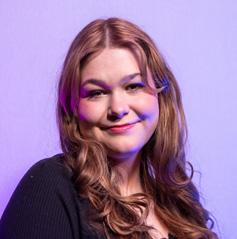
Shayla is a sophomore majoring in biology. She plans to become a dermatologst. When not at school, you can find her wth her crossed eye cat named Winston.
— a02416397@usu.edu

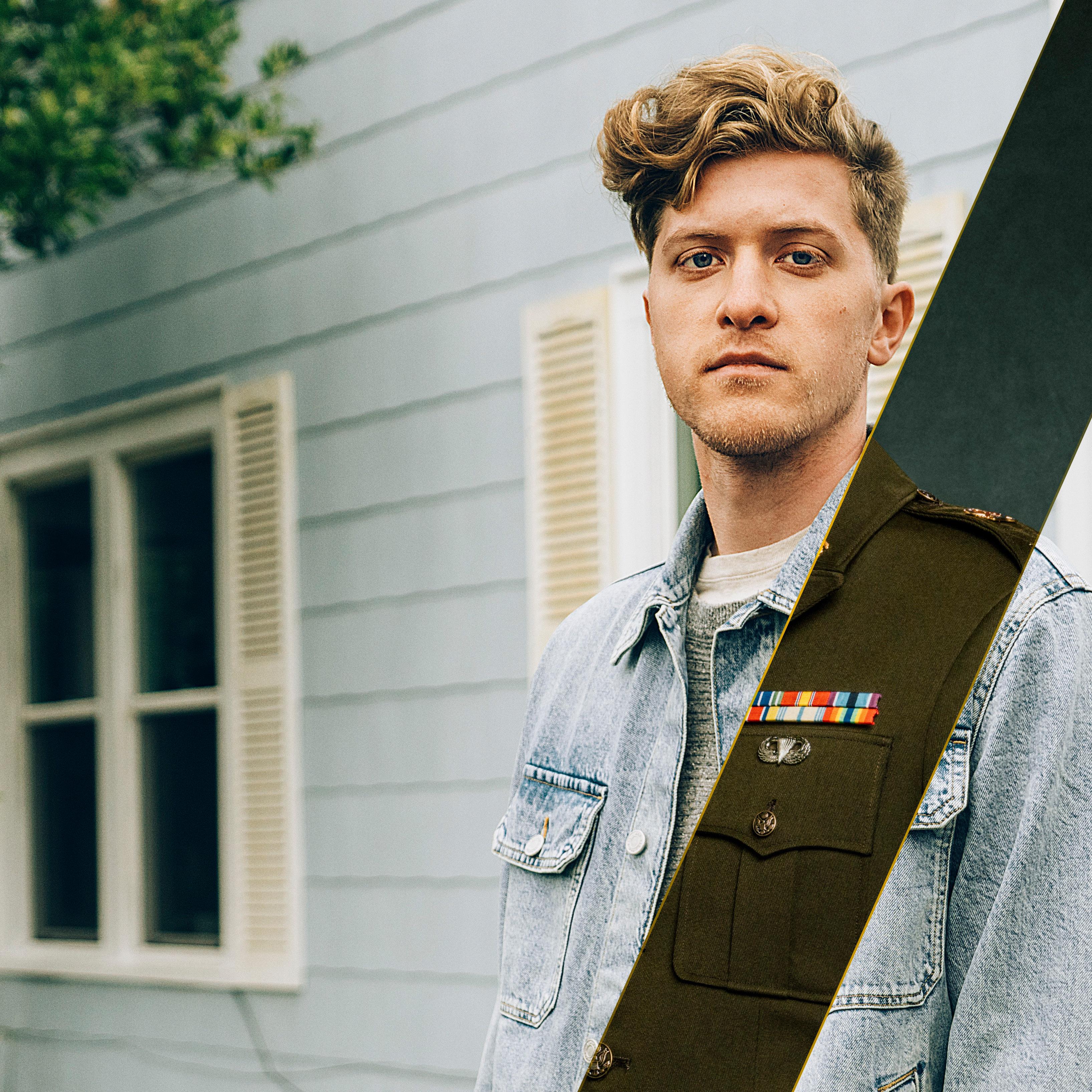
By Lacey Cintron STATESMAN REPORTER
Every Thursday, members of Utah State University’s Performance Whipcracking Club meet to show off their skills, learn new whip cracks and share in a passion for performance whip cracking.
Whips are one of the oldest man-made tools, with different variations found across cultures from ancient Egyptians to the Innuits of Alaska and Canada. Originally used for cattle driving and horse riding, today whip cracking has become both a sport and a performance art.
Joshua Merrell, the club’s founder, is a third-year mechanical engineering student. Merrell started the club in 2022 and has since been teaching new members how to crack the whip.
“A long time ago, whips were used for equestrian means, but at some point, there was an art form discovered in it,” Merrell said. “Our club is mainly an appreciation of that art form.”
Over a hundred different types of cracks have developed as whip cracking transitioned from tool to art, all varying in sound and form with the type of whip.
“We make whips, we crack whips and we’re hoping to do some performances later on in the year,” Merrell said.
According to Merrell, beginners learn three main types of cracks. The first type are loop cracks, which is what may come to mind when picturing whip cracking. A loop is formed and rolls out, resulting in a loud sound.
The second are the U-shaped cracks, commonly referred to as flicks. The whip is straightened out and pulled in the opposite direction to create a U in the air.
Lastly are slack cracks, where slack is created in the whip, then pulled forward to create sound.
“There are tons of variations of all those types of cracks,” Merrell said. “There’s an infinite number of combinations, probably a main 200 that you could learn and know the basics.”
Some of the most popular cracks are the Cattleman’s crack, The Arrowhead, Four Corners and The Snake Killer. Chese sprouted from the basics of the U-shape, slack and loop cracks.
According to Merrell, picking up the sport is relatively easy — it’s mastering fast, snappy combinations without hitting yourself in the process that takes skill.
“It’s not crazy hard to pick up,” Merrell said. “The hardest thing about it is overcoming your instincts. If you bring up a whip, your instincts say to push it away. But when you do that, it collapses in on itself, and it grabs you.”
The sport has gained traction around Utah.
“I grew up in Vernal where we’ll see people all the time that are really good at it,” Merrell said. “They’ll go around on horseback doing these crazy tricks.”
There are pop-up competitions, rodeos and meet-ups across the state, all dedicated to the art of cracking a whip. The Utah Whip Convention held in Provo is one of the bigger events for Utahns.
Whip cracking is a popular sport in countries like Germany, Britain and recently, Australia. Traditional competitions like Bavaria’s Aperschnalzen and modern showcases like the British Whip Cracking Convention invites
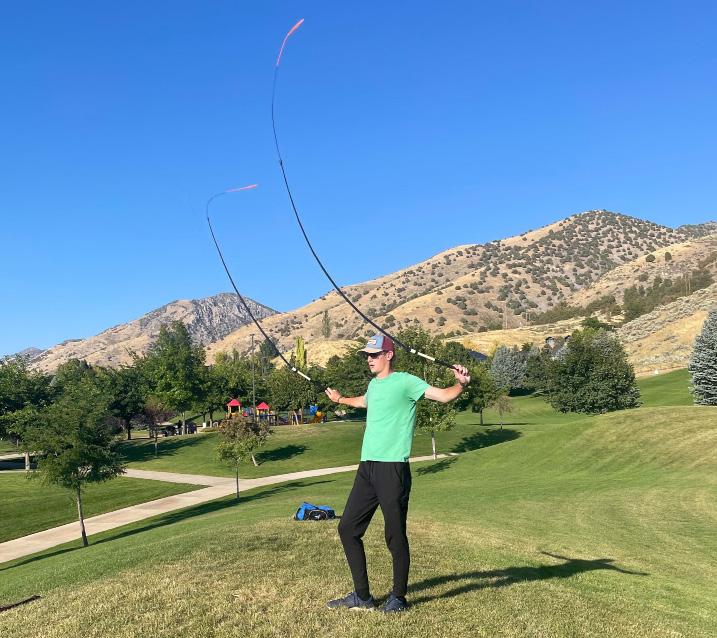
enthusiasts from around the world to show off their skills or learn new forms.
In the United States, the most popular event for whip cracking enthusiasts is the L.A. Whip Convention held in Burbank, California.
“They have competitions, vendors where they sell whips and a whole gathering,” Merrell said. “I want to do a little bit of performance with a lot of competition.”
According to Merrell, collaborations with USU’s Rodeo Club are in the works to put on these competitions and potentially travel to bigger conventions like L.A. Whip Convention.
Justin Nelson, a member of the club, is a fourth-year student studying technology.
“I just think it’s fun to learn about whip cracking,” Nelson said. “My favorite part is chatting with people in the club.”
Nelson has been a part of the club for a year. According to Nelson, it’s been a great opportunity to learn new skills.
“I like learning something new, and it’s relatively simple to pick up,” Nelson said. “If you’re really invested in it and if you stick with it, there’s a lot more you can learn.”
Whip cracking enthusiasts can join Merrell and the rest of the club on Thursdays from 5:30 - 7:30 p.m. at Hyrum Gibbons Mount Logan park.
“I love that we’re kind of breaking down stereotypes with it. Sometimes there can be a sexual or racist connotation to whip cracking, so it’s nice to subvert that,” Merrell said. “It’s just a fun club.”

Lacey Cintron is majoring in psychology. She loves learning about the human mind, sharing stories and naps. — a02388032@usu.edu
By Layla Alnadar STATESMAN REPORTER
Preston Alden graduated from USU in the spring of 2024 with a degree in mechanical engineering. Five years ago, he began working on the designs for the world’s largest Rubik’s Cube. Made out of 13,827 pieces, Alden derived the cutting patterns himself and virtually designed the cube in SolidWorks. Alden spoke to The Utah Statesman about his experience in this process.
According to Alden, the largest cube ever built was a 33x33x33 Rubik’s cube by Greogoire Pfennig of France who currently holds the Guiness World Record. Alden’s Rubik’s cube measures 49x49x49.
Statesman : How did you begin the process of building the cube?
Alden : I looked up a ton of tutorials on how to design a Rubik’s Cube and how it works. I didn’t really know much at the time.
Q : What did you have to revise about your designs?
A : I had about five variations, and each one took me longer. I was adding in more and more detail, learning from each iteration. I was originally thinking of making it with straight cuts, but in the end, I decided to go with this curvy look.
Q : What challenges did you face when taking on this project?
A : It’s actually impossible to do this in a way where all the cubes are the same square size. Once you get past a 7x7, it has to kind of get distorted because you don’t want to cut off the corner.
Q : How long did it take to print the materials for the cube?
A : It required 11 and a half months of printing if it had been printed continuously, so I bought four printers so I could have all four printers running at once. It took me about three months of continuous printing.
Q : What was the biggest challenge when you were constructing the cube?
A : You’re forced to make, at minimum, the center edge piece at least 15% of the cube’s height. The inner pieces get smaller, and the outmost pieces get bigger.
Q : How did you approach the design process?
A : I chose to do it differently. I was going off previous records and their designs, where they were using a pattern of two pieces to the side and one in the middle and you go up, and that’s a binary mechanism. It was creating a place with no tolerance, where it just squeezed too hard.
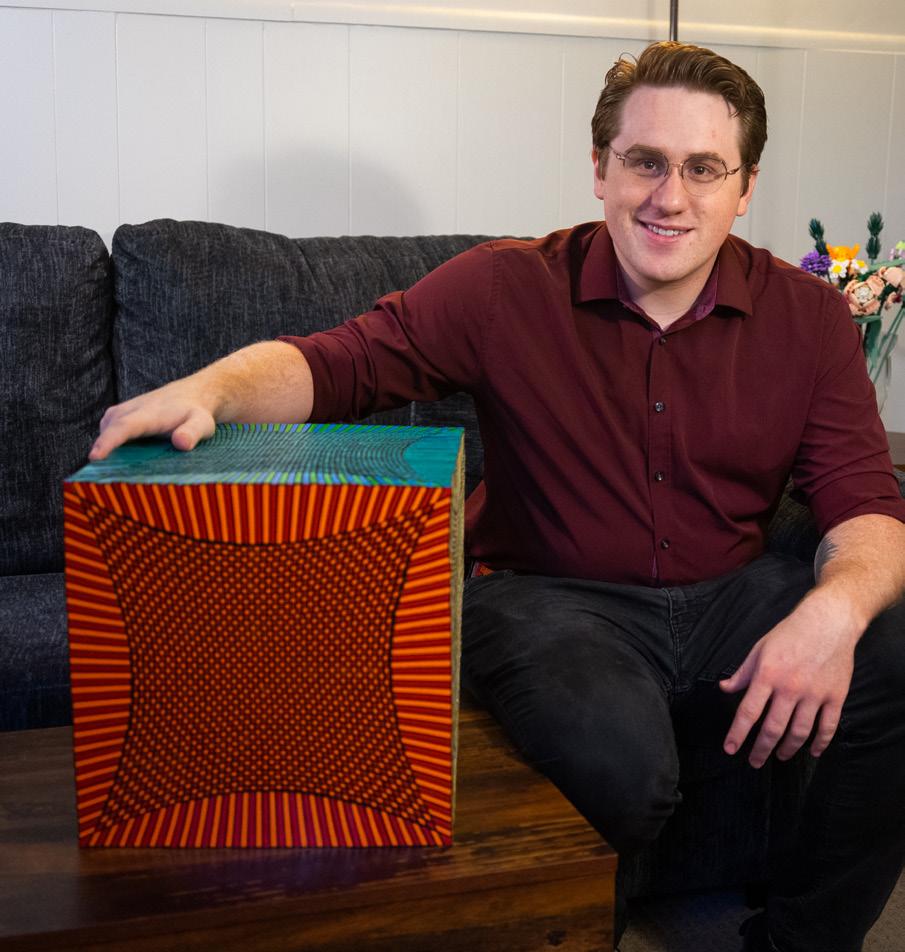
Q : How does a Rubik’s Cube work?
A : Only the center pieces are bolted to the core. The way that a Rubik’s Cube works is that the pieces are just stuck under each other, so they can’t move outward, but they can twist.
Q : What did you not expect to take a lot of time?
A : The entire project was extremely tedious but very rewarding in the end. There were so many small aspects, like rounding the corners of the edges — that took me over 30 hours.
Q : What role did your engineering background play in this process?
A : This was a passion project. When I was studying engineering, it was complimentary to the skill set, but it was something I enjoyed doing. In the end, all you have to do is cut a solid with a surface, and as long as you cut it along that surface, it will twist around it. I found the process of designing Rubik’s Cubes to be amazingly simple.


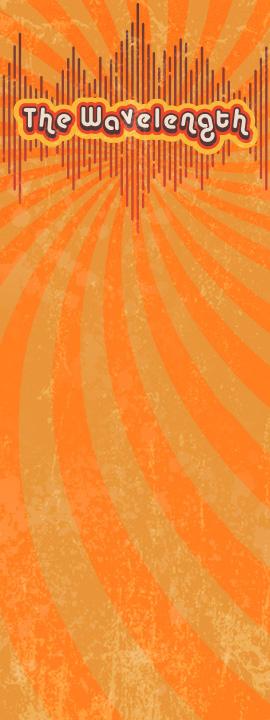
Ryan Andersen is the host of “Emotional Spectrum Sounds,” blending emotion and music every Thursday at 11 a.m. on Aggie Radio KBLU LP 92.3. This show provides Ryan the opportunity to explore topics related to mental health, communication and relationships with listeners.
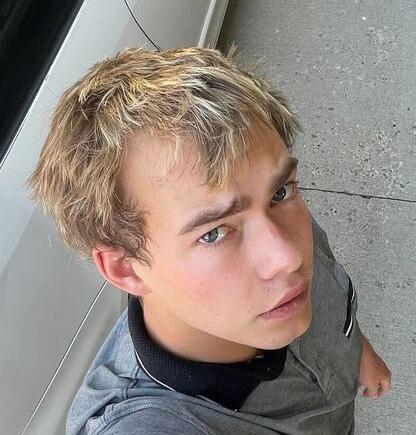
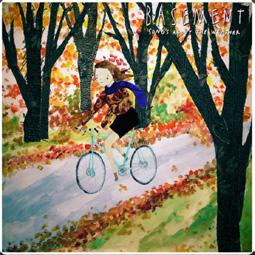


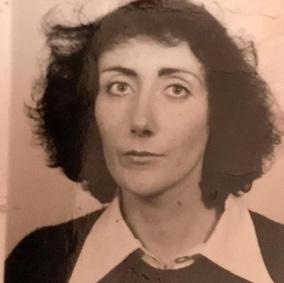






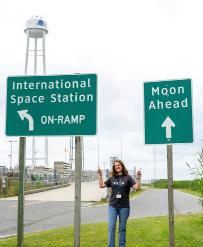
By Avery Truman STATESMAN REPORTER
What does it take to reach the stars? Literally speaking, a lot of engineering, calculations and rocket fuel. Figuratively? A simple acceptance letter in my inbox from none other than NASA Goddard Space Flight Center, where I spent my summer as an intern capturing the stories of space exploration.
I believe the experience gained in my role as lifestyles editor for The Utah Statesman got me to NASA. Now, I would like to share a little bit about my experience on the very platform that gave me the momentum I needed to get accepted.
I had the usual jumping-up-and-down reaction one would expect from a lifelong space enthusiast and proud owner of 12 NASA shirts when I found out. A frenzy of excitement and anxiety from my family quickly swept over me when they realized I would be moving to the Washington, D.C. area for the summer.
My first week at Goddard felt like summer camp, where all the other kids were geniuses and the counselors were literal rocket scientists. Don’t even get me started on craft time. That being said, I was immediately struck by the kindness of everyone there. The interns in the Office of Communications hit it off instantly.
After being officially badged and fingerprinted, I had clearance for the Goddard campus, which immediately reminded me of USU in its college campus-like setup, except there were electric scooters whizzing around to take
employees from building to building. Have you ever seen a group of astrophysicists fly by on an electric scooter? It was a bit surreal.
I quickly became familiar with several key spots on campus, from the clean room where I watched people in bunny suits build the Nancy Grace Roman Space Telescope to the studio where I helped film live shots broadcast to news stations across the country.
My role was to write stories about planetary science to be published on nasa.gov. This entailed interviewing the scientists and engineers that made impossible missions come to life.
One thing that will always stick with me about this summer is how quickly I got used to hearing impossible things and simply accepting them as true, because that’s what NASA is about. Making the impossible a little less far-fetched.
Have you ever considered the average car or cell phone today would seem like magic to those in the horse-andbuggy era? Or that some of the same people who rode those horse-and-buggy carriages later watched Neil Armstrong step foot on the moon?
The world has been developing fast enough that science fiction can come into existence in one lifetime. The people at NASA are keeping this fact a reality, and that was something incredibly rewarding to contribute to.
My first assignment was to write about the weird and bizarre things an astronaut might experience at the Moon’s south pole — things that cannot be experienced anywhere humans have explored before.
Artemis, the next planned mission by NASA to send humans to the moon, is set to land near the South Pole because the craters hold great intrigue and mystery. The Moon has water ice at the depths of some of these craters, which are kept in perpetual shadows due to the low angle


of the sun in this region. The inside of these craters are some of the coldest places in the entire solar system.
The naturally alien features of this region means Artemis astronauts will experience some of the strangest phenomena in human history, including a shorter horizon line that makes distance difficult to perceive. Astronauts will encounter statically-charged dust that seems soft like baking powder, but the deceptive dust is a wolf in sheep’s clothing — it’s razor sharp.
I got the opportunity to sit down with scientists whose main research focused on moon dust, or regolith. I never realized how much science there is behind a tiny grain of dust until talking to someone who made it their livelihood. I shook hands with the contamination specialists who will ensure no human impurities taint Artemis moon samples.
It’s rewarding to know that my writing, interpretation and collection of their knowledge is now available to anyone. Now that information, which was never before published, is accessible to the masses.
When I wasn’t working on my stories, I got my own little taste of Hollywood, so to speak. Goddard has a production studio to film videos for NASA platforms, create social media content and feature scientists for public broadcasting.
Despite the fact that I’ve never used a fancy camera in
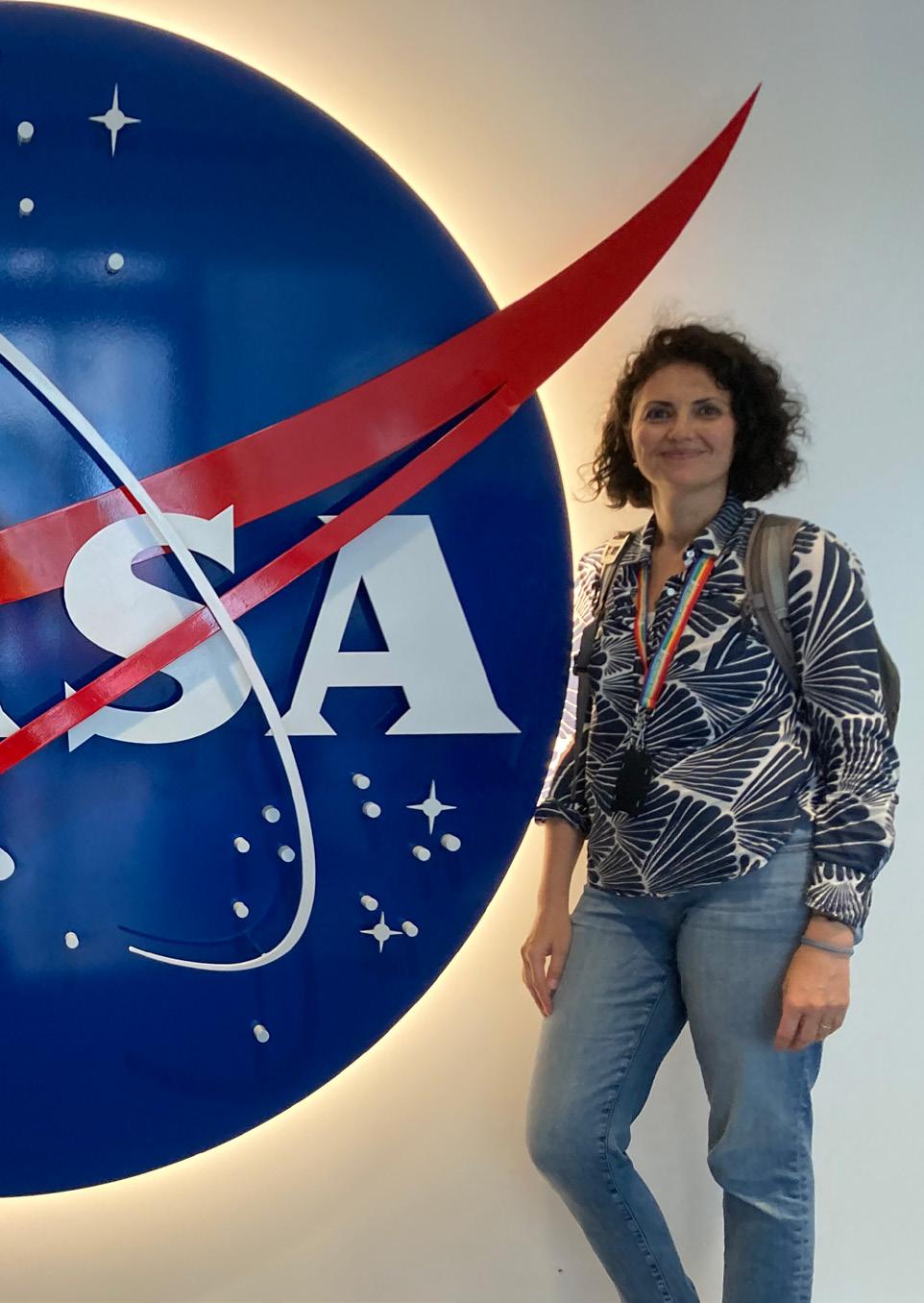
my life, I got to put the headset and microphone on and feel like a cinematographer.
I manned the camera for two live shots in the summer and sat behind the scenes to listen to the crew coordinate with news stations, one of which was broadcast to Salt Lake City.
Many of the NASA employees knew more than I expected about Utah due to the 2023 OSIRIS-REx landing in the west Utah desert. Those who traveled there for the landing witnessed the collection of the probe. One member of the film crew tried to describe where he visited while in Utah and was plagued by the universal Utahn experience of trying to pronounce our city names. “Tool-y” was my personal favorite.
OSIRIS-REx was the first return mission to an asteroid. Once the sample was collected from the asteroid Bennu, the capsule returned and has since been analyzed at various labs.
On an intern field trip to the Smithsonian Museum of Natural History, our cohort got to see a grain of the sample and hear from the curator of the display. We were surprised with an opportunity to hold a piece of the Moon and a piece of Mars in one of the museum’s restricted areas.
A four-hour bus ride away lay the island of Wallops Flight Facility in Virginia. After playing numerous car
games with other interns, we made it to the WFF visitor center. The control room was unreal. To see the room where the iconic countdown takes place was a dream. Afterward, we got special access to see the launch pads way out on the island. Two green road signs were set up just off the launchpad with arrows pointing towards them like street signs. One read, “International Space Station ON-RAMP” and the other, “Moon Ahead.” I supposed neither were technically wrong, and both led to great photo ops.
My second major project was to write a feature on what materials would be used on the upcoming DAVINCI mission to Venus, one of the most hostile places for machinery to visit.
The thing about writing a good story is you need to become an expert in a matter of weeks, or even days, on a topic professionals spent years learning.
After my first draft, my mentor recommended I get more excited about Venus. I didn’t really understand what she meant. My writing was solid, and the facts were there. It was hard to take the criticism from someone I looked up to so highly.
But, I did what she asked. I watched documentaries, listened to podcasts and spoke to more engineers about the planet instead of the mission. I even volunteered to speak at a Goddard TED Talk-style event about why venturing to Venus is important.
Near the end of my internship, I finally sent her one of my last drafts of the story. She gave me one of the best compliments I could have received at the time. She said it was clear in my writing I was passionate about Venus.
My DAVINCI adventures took me all across campus, and sometimes beyond when I began daydreaming about potential story angles to highlight “Earth’s evil twin.”
Venus got the nickname because it’s similar to Earth in size and location. Originally, we thought Venus was a lush jungle planet with alien species roaming the leafy brush.
Ancient Venus may have had an atmosphere full of water vapor that eventually formed into shallow liquid oceans. Today, its atmosphere is full of CO2 and thick sulfuric acid clouds. How did a planet so like Earth in size and location turn out so different?
For parts of the process, I felt like I became part of the DAVINCI team. I sat in on their new recruit briefings, got to know their principal investigator and joined a tour where I saw some of the prototype materials.
Our last field trip of the summer was to NASA Headquarters. It was almost my last day, and I was feeling sentimental. The summer flew by with no hope of me catching up to it. When I reflect, I wonder if it even happened. HQ had a dark room that projected interactive images onto the walls and floor. Laughing in the falling light with my new lifelong friends, I considered how everything and everyone sharing this planet is a part of a living, breathing system. My perspective as an environmental studies major mixed with the endless wonder of space I was surrounded with reinforced how important it is to keep that system breathing.

There were many experiences that changed my perspective and people who had an impact on me. From my mentors who pushed me to fill my potential to the NASA employees who took time out of their busy day to chat with an intern and those at the Utah Space Grant Consortium who cheered me on from home along the way. Now that I’m back in my neck of the woods, my friends and coworkers never miss an opportunity to remind me, sometimes at embarrassing moments, that I work for NASA.
The connections I made led to another internship writing for NASA’s Goddard Office of the Chief Technologist remotely, so I can keep reaching those stars while remaining where I’m pulled, near the spot where the sagebrush grows.
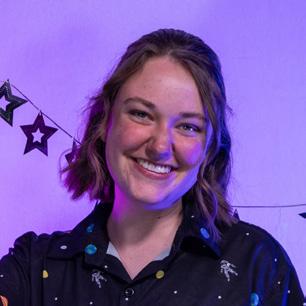
Avery Truman is pursuing environmental studies and geography. When she’s not working in her position as The Utah Statesman’s lifestyles editor, she enjoys writing for NASA and reading science fiction.
— avery.j.truman@usu.edu
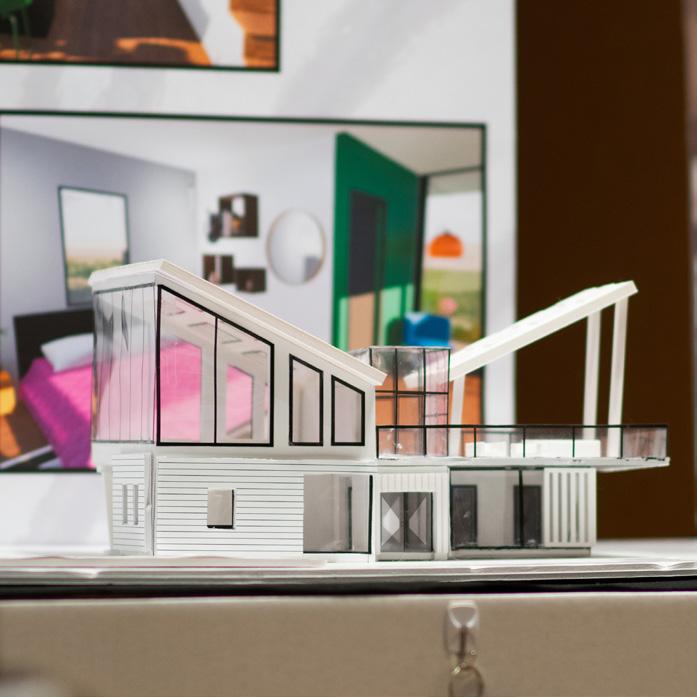
By Essence Barnes STATESMAN REPORTER
At the beginning of their sophomore year, interior architecture and design students at USU are faced with a year-long project assignment. They must design and create a three-dimensional tiny house with several levels and have it meet all Utah and residential building codes. The houses are then exhibited in the USU art galleries at the beginning of the following year.
According to the USU interior architecture and design website, the program is the first in Utah to be recognized by the Council for Interior Design Accreditation. The program is known for winning international design competitions and providing students with opportunities to work professionally, though it is a highly competitive program to move through.
The 2024 Tiny Houses Exhibit will be open from Sept. 2-22.
The tiny house assignment was first created by Steven Mansfield, a principal lecturer of the interior and architecture design program. He has assigned the project to his sophomore students every year since.
“I developed this project 23 years ago as a mechanism for students to learn drafting and construction,” Mansfield said. The assignment gives students an artistic and hands-on opportunity to learn the technical skills and software necessary for careers in architecture and design.
“There are multiple objectives,” Mansfield said. “They need to learn design, they need to learn construction and they need to learn how to document those so they can be built.”
The process for building a tiny house begins with creating a design for the home.
“One of the things we were trying to do is encourage creativity,” Mansfield said. “We didn’t just want them to go out and design a house that looks like something you’d see in Logan.”
Students are given the option to incorporate creativity into their design process through the use of abstraction.
“They take a concept such as an animal or a tool and they abstract it into geometric shapes, and that helps give the students a creative footprint to work in,” Mansfield said.
Some concepts abstracted by students for the exhibit include wood bark, insects, chain link and a microwave. They turned these physical concepts into lines, shapes and forms that implied through the design of their house what the original concept was.
“Usually we have them do three different abstractions where we critique them on which ones we think are the strongest,” Mansfield said. “Over a period of about a month, they start transforming that abstraction into a floor plan of a house.”
The students must flex their drawing muscles by creating construction documents or architectural drawings of their house floor plan.
“After they settle on a plan they need to transform it into a home by adding a staircase and thinking about space planning,” Mansfield said. “Where would a bed go in the home, where would a kitchen go, where would windows go?”



By Mark Greenwood STATESMAN REPORTER
Utah State University volleyball launched their season earlier this month in pursuit of a fourth straight Mountain West Championship. The Aggies won a share of the regular season title in 2021 and were crowned tournament champions in 2022 before claiming their first outright regular-season title last season.
USU volleyball has been a force in the Mountain West over the last several years, but that has not always been the case. All three championships are under the direction of head coach Rob Neilson, hired in January 2020. At the time of Neilson’s hiring, the Aggies had wrapped up two of their worst seasons in program history. They finished with five wins and 24 losses in 2018, and after a brutal 2019 season, they ended the year with just two wins and a stunning 28 losses, their worst finish since 1995.
After a shortened 2020 season due to COVID-19, Utah State ripped off three remarkable seasons, all ending with hardware for the Aggies. The turnaround for Aggie volleyball has been remarkable.
With so much success in recent memory, Utah State opens its season looking for more of the same.
“We’ve built something pretty special here,” said junior outside hitter Kaylie Ray in an interview with The Utah Statesman. “The goal is to always keep it moving forward and to continue to build on the foundation that’s come before us.”
After redshirting in 2021, Ray played in 21 and 20 matches in the 2022 and 2023 seasons, respectively. Now in her fourth season suiting up for the Aggies, Ray brings a valuable thing to her team: experience.
Utah State returned just four players from the 2023 Mountain West Championship team. Ray, opposite side hitter Adna Mehmedovic, libero Kendal Hone and middle blocker Kelsey Watson are the only players returning alongside 13 newcomers.
“I think everyone’s really eager to step into their roles. We have a lot of girls, and especially with it being such a young team, ready to buy into the program and buy into what their jobs and responsibilities look like moving for-

ward,” Ray said. “I know us older players — we’re ready to carry a good chunk of that load, but these young players are more than capable.”
Not only do the Aggies bring a new team to the court this fall, but this team is much younger than in seasons past. Utah State has 12 first-year students listed on their roster and 14 underclassmen in total.
“We’ve got freshmen as our liberos, and freshmen as outside [hitters], and freshmen at setter, and freshmen at opposites,” Neilson said on his young team. “We just need some experience under our belt, some matches and some understanding of how to play the game. We’re definitely talented enough at all those positions to have a great season.”
Mehmedovic echoed her coach’s confidence in the young talent despite perhaps some inexperience.
“We’ve got some big girls, big attackers, and obviously we’ve had big attackers in the past,” Mehmedovic said. “But these girls — they’re so capable of so many things that maybe our team wasn’t in the past … it’s scary to think of how amazing this team is going to be.”
In addition to a new team’s struggles and growing pains, the Aggies lost several key contributors this offseason. Utah State will be without the contributions of middle blocker Kennedi Boyd, a 2022 all-Mountain West team selection, outside hitter Shelby Capplonch, a 2023 allMountain West team selection, and outside hitter Tatum Stall, who earned all-Mountain West honors each of the last three seasons.
Despite the lack of these familiar stars and the fact that the team is such a new, young team, coach Neilson is confident in his squad entering the season. “Teams are going to have to catch us early because we’re going to be real good as we get to the end of the year,” Neilson said. “We just need experience. Then I think it ends up being a pretty balanced offense, which is great for us. Maybe more explosive and physical than we’ve ever had, but we’re not there yet.”
With the recent turnaround within the program and the new standard of winning, student interest in Utah State volleyball has never been higher. With “Club Estes” banners donning the south walls of the gym, The HURD fills the student section nearly every match and makes their presence felt.
“I know it’s scary for girls in our conference to come play here because they get so loud, and the fans are, like, on top of us, and it just makes it such a fun environment,” Ray said on student support.
“I feel bad for any team that has to come in here and play against us with those guys behind us,” Mehmedovic agreed.
USU opened their season last month at the Utah Classic, winning their first match 3-2 over Green Bay before dropping back-to-back matches against Utah and University of Texas at El Paso. The following weekend welcomed the Aggies back into the Wayne Estes Center for the first time in the 2024 season, where they hosted Cal and #8 Purdue. The Aggies faltered in both matches, losing 1-3 to Cal and 0-3 to Purdue.
“We’re going to see lots of plays, freshman plays, things

where we’re not quite connecting setters and pin hitters, not in the right place at the right time, balls falling that shouldn’t fall,” Neilson said on their early adversity. “That all comes with kind of understanding how to play together as a group in tight and tough moments.”
Despite the early challenges, Neilson feels good about the direction of his young squad.
“We’ll get there. We’re excited. This is a super-talented group, as talented as we’ve ever seen,” Neilson said.
After a four-game road trip, the Aggies are back in Logan and hosting in-state opponent Utah Valley at the Dee Glen Smith Spectrum for their annual Spectrum Magic Night this Thursday at 8 p.m.

Mark is a sophomore at USU studying economics and finance. He’s an avid L.A. Dodger fan and loves playing tennis and skiing.
A02361802@usu.edu
By Landri LaJeunesse STATESMAN REPORTER
The USU Rodeo Club took to the arena in Cedar City from Sep. 6-7 for their first rodeo of the season, and they kicked up quite the score.
Cassity Gluch, Blaze Klingler, Payt Goodey, Ian Livinstone, Brooke Morris and Grace Wittstrom of USU gave the other 10 schools in the region a run for the money. All of them made it back to the final round in their events, including breakaway roping, tie-down roping, steer wrestling, team roping, saddle bronc riding and barrel racing.
Morris went on to win the short round and average in barrel racing, with runs of 18.14 seconds on Friday and 17.81 seconds on Saturday. Saddle bronc rider Livinstone also won his event, scoing a 76-point ride.
However, the club’s women’s captain and goround finalist team roper Wittstrom believes that the team’s success wasn’t just a matter of how they performed in the arena, but outside of it as well.
“A lot of our kids and our team have really stepped up to the challenge,” said Wittstrom. “They are taking the mental game seriously, and it’s shown in the practice pen, and it’s shown in the competition.”
With six competitors returning to the short go-round and two riders winning their events, this weekend was a massive accomplishment for the team. However, Wittstrom thinks that all of the work that the team has put in has led to an even greater milestone.
“Our biggest accomplishment is just the hard work that everyone’s been putting in,” said Wittstrom. “This year is a big year of growth and focusing on mindset, practicing hard and practicing with a purpose.”
Vice president Goodey, who was a finalist along with Wittstrom in tie-down and team roping, ageed.
“We are learning where we can improve as far as practices and stuff as a team,” said Goodey. “As far as that goes, we’re just starting to see where we can make improvements and adjustments.”
Wittstrom and Goodey have always prioritized growth and improvement in their practices and competitions. This is also why Goodey thinks rodeo is “more than just a sport.”
“It’s not just showing up to something,” said Goodey. “It builds a lot of character, not just in the arena, but outside of the arena. It teaches people how to work hard and stick to something, even if it’s not something you want to do.”
Wittstrom also believes that this allows
the team to work together and have a foundation of trust.
“Rodeo is technically an individual sport,” said Wittstrom. “But the way that our team functions is really focused on trust.”
Just last weekend, Wittstrom helped her teammate Gluch by setting up her horse in the box, but if she had done something wrong, it could have messed up Gluch’s entire performance
“Taking advice and trusting your peers, trusting your horses, trusting the outcome — that’s a huge part, especially in team roping,” said Wittstrom. “You really have to trust your partner that they will give you the best shot, or you’re going to give him the best shot.”
Wittstrom has seen this over the course of her three years in college rodeo, and she works to share it with newer members of the growing team.
“They were freshmen too once,” said Karina Coombs, a first-year club member.
“So they are so willing to help.”
With the support of her teammates and leaders like Wittstrom and Goodey, Coombs has found a place in the arena and among the team.
“We all pulled up in different trucks. Some of us carpooled,” Coombs said. “But just being there was fun and exciting.”
That’s what makes the sport memorable to Coombs and all of those who support it.
“We wouldn’t be able to do it without community support and people to cheer us on,” said Wittstrom.
For the USU Rodeo Club, this support means more to them than kicking up dust — or even a high score.
The rodeo club competes next at the Cache County Fairgrounds on Friday, Sep. 24 from 7-10 p.m. Tickets are available at the gate and are $10 for adults and 5$ for students, and family packs can be purchased.

Landri LaJeunesse is a sophomore studying journalism and communications with a minor in yoga studies. Catch her radio show RADIO ESPRESSO Wednesday @ 10 a.m. — a02411668@usu.edu
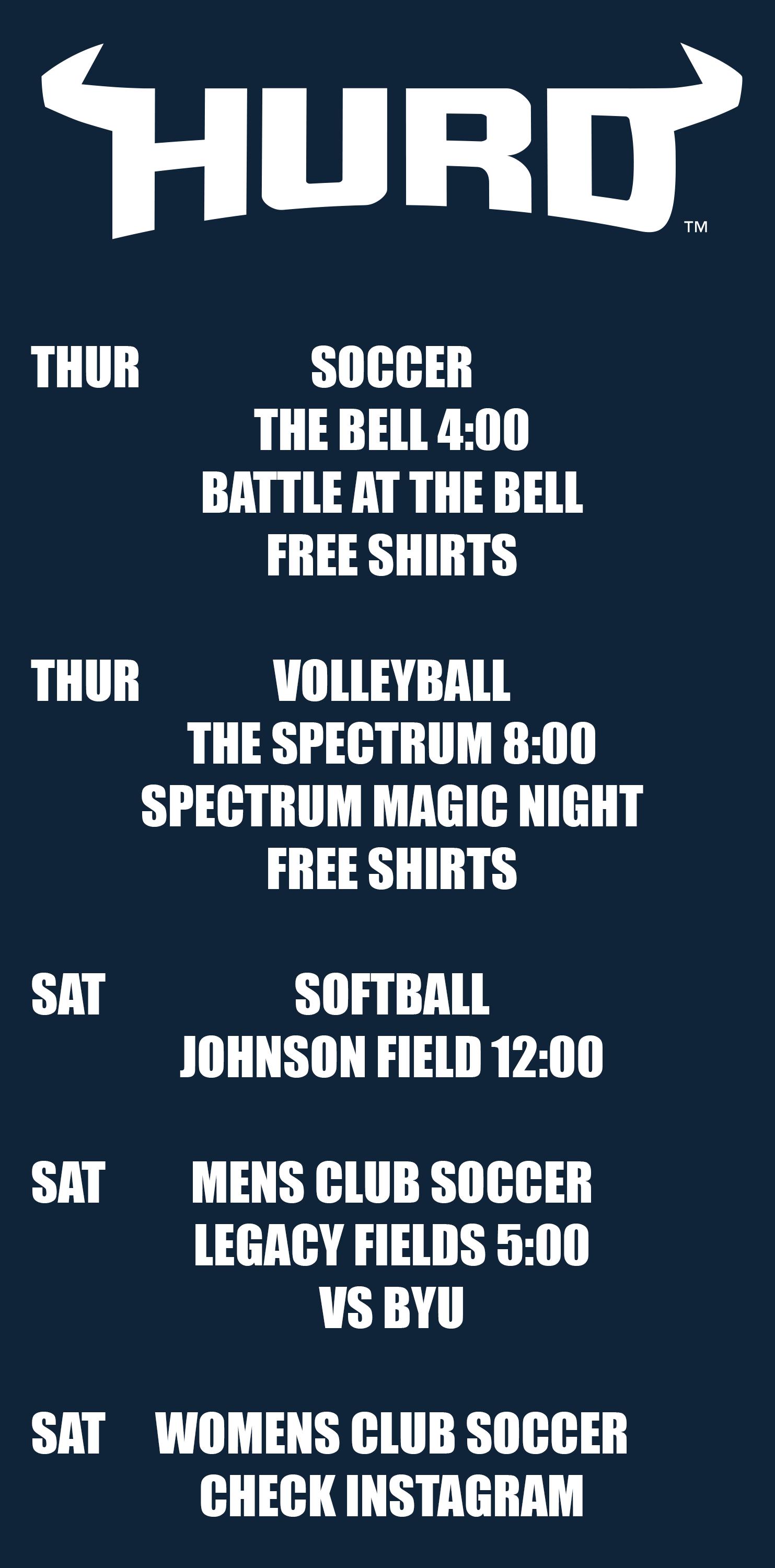
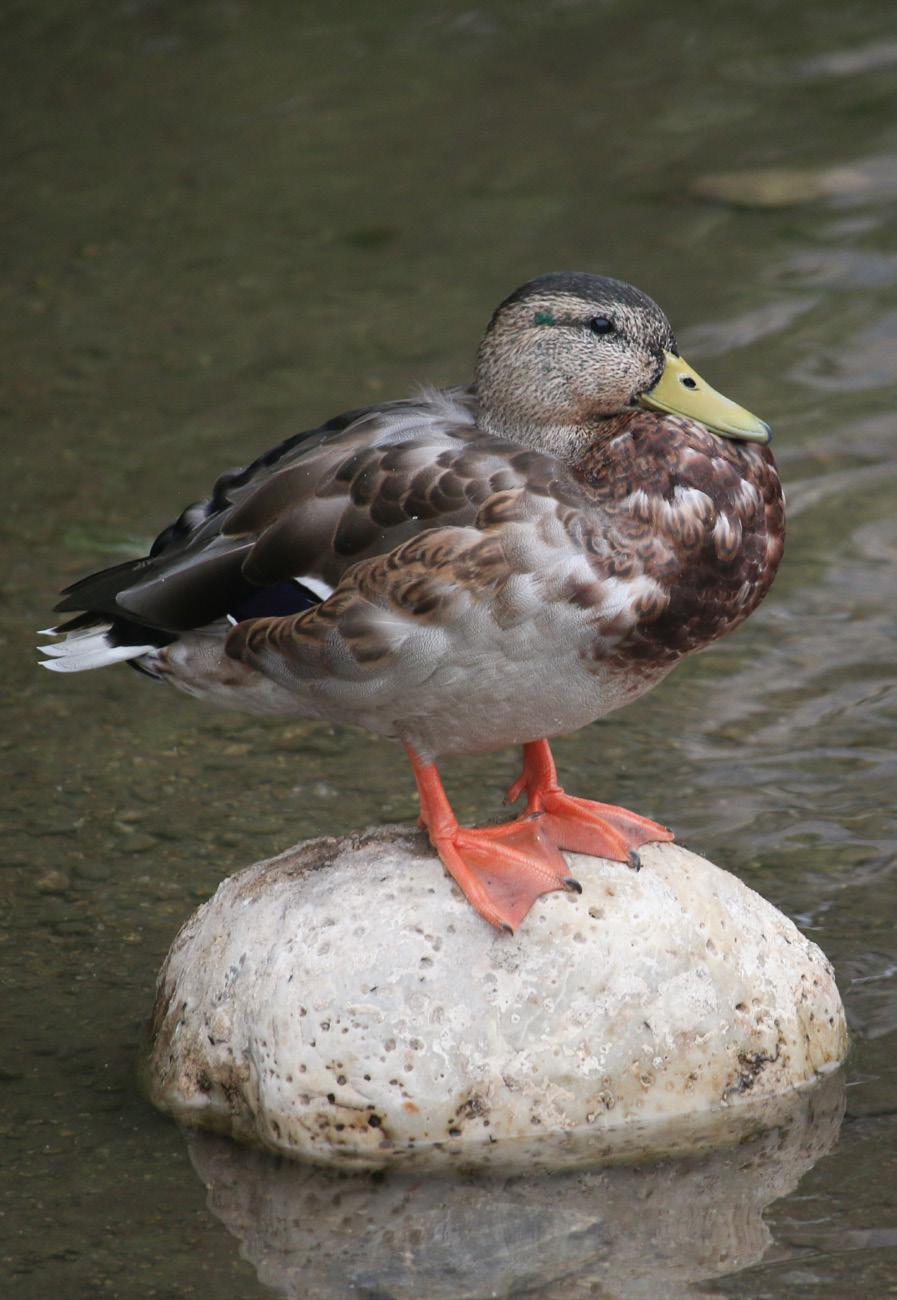
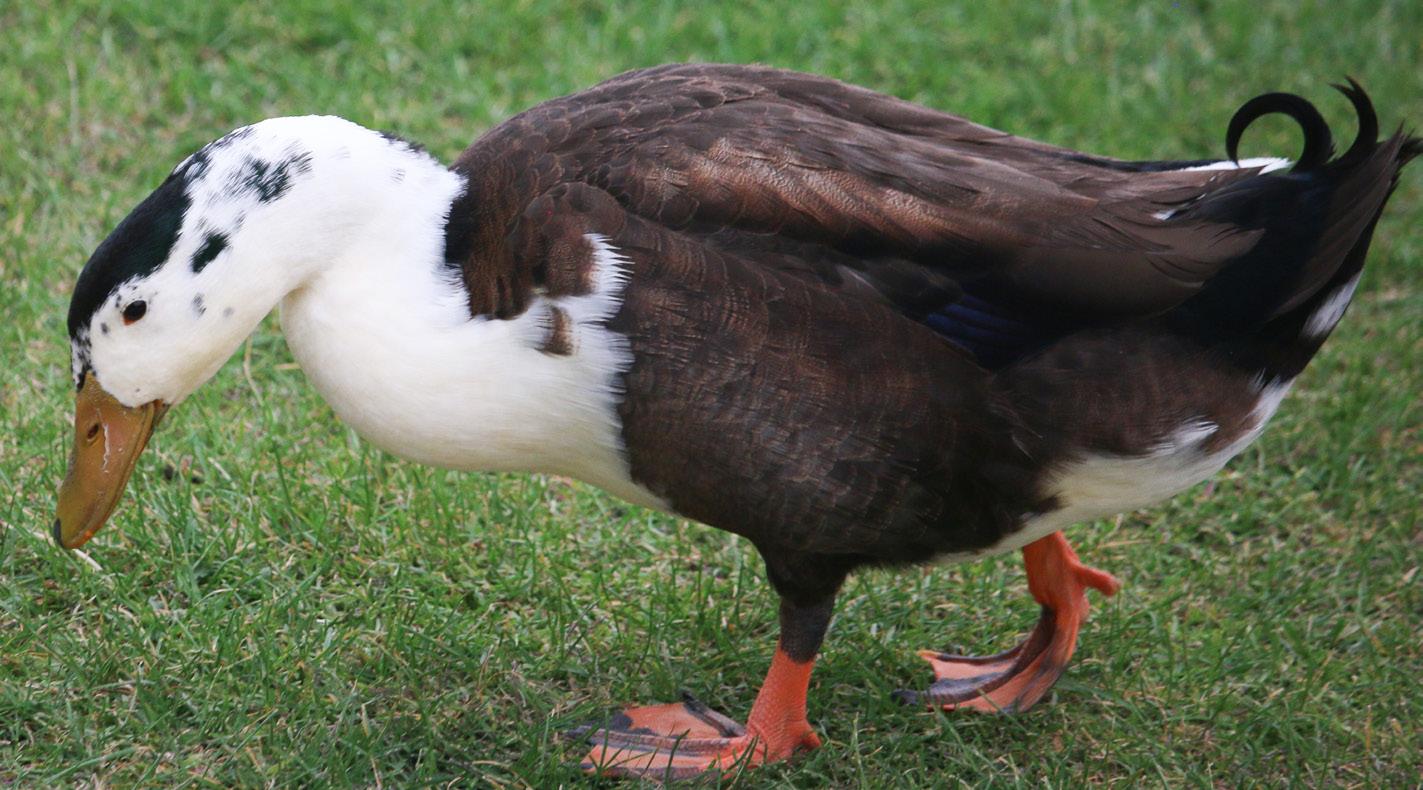


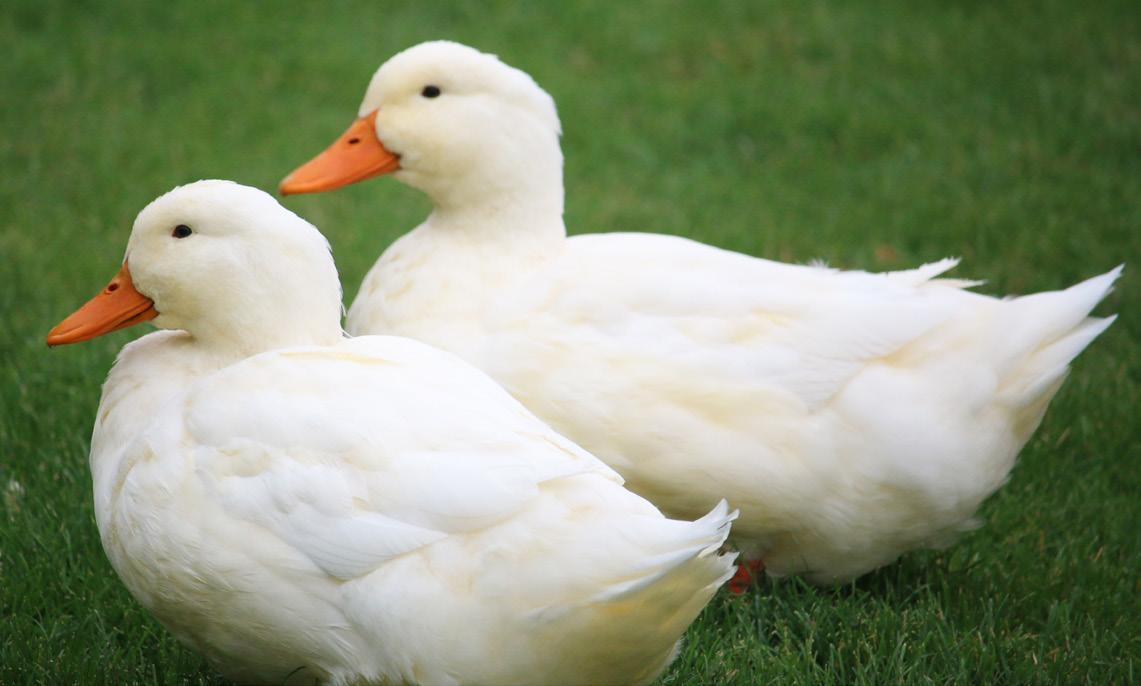

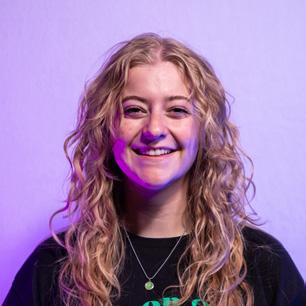

By Ashley Dorius STATESMAN REPORTER
When I was in eighth grade, my English teacher introduced me to Agatha Christie. She had no clue what can of worms she had opened that day. I’ve always loved mystery novels — my dad used to read them to me every night. We’d sit and solve two-minute mysteries and try to sleuth like the great Sherlock Holmes. So being introduced to a different but prolific mystery writer like Christie was a dream come true that quickly turned into a bit of a hyper-fixation.
However many of her novels I read, my favorite will always be “And Then There Were None.” Mrs. GryzwaBirge put that book in my hands that fateful day, sealing my fate. No matter how many Hercule Poirot and Miss Marple stories I read, this dark tale of justice, guilt and the effect of fear on the human psyche will remain fascinating. I catch new clues every time I reread it, enriching the experience.
The novel starts with 10 strangers taking an invitation to an island for various reasons. At their evening gathering, each attendee is accused of murder by a record played through a wall. As the storyline progresses, the characters are killed one by one, following the lines of a

effects, examining what happens when people are forced to face their guilt while fearing for their lives. Written in 1939, the novel is different from other Christie classics. There is no key detective, and the answer is not revealed in the chapters. Rather, the criminal explains their process through a manuscript in
Their distrust of each other, internal guilt and fear grate on them with varying effects, examining what happens when people are forced to face their guilt while fearing for their lives.
— Ashley Dorius
nursery rhyme. Told through shifting perspectives and a somewhat omniscient narrator, the dwindling members question and accuse each other. Their distrust of each other, internal guilt and fear grate on them with varying
the epilogue. Themes common in Christie’s work do pop up, though, specifically the idea of interfering when the courts cannot. In several of her stories, a “court” gathers evidence and decides the fate of an individual after the
legal system fails their thirst for justice. So it is with “And Then There Were None.”
This book is not just a personal favorite. It has garnered acclaim from critics and the general public. It is ranked #10 on the Mystery Writers of America’s Top 100 Mystery of All Time list. It has sold over 100 million copies and is consistently ranked on lists of the best-selling books of all time. Christie’s estate held a contest to determine which novel is the “World’s Best Christie,” and the honor was given to “And Then There Were None.” Reviews often point out the genius of the book’s plot twists and ending. In my opinion, a good mystery requires you to be guessing up until the very end, and “And Then There Were None” accomplishes that with skill and poise.
Christie even wrote in her autobiography that this novel is one of her most significant points of pride, writing, “I wrote the book after a tremendous amount of planning, and I was pleased with what I had made of it … It was well received and reviewed, but the person who was really pleased with it was myself, for I knew better than any critic how difficult it had been ... I don’t say it is the play or book of mine that I like best, or even that I think it is my best, but I do think in some ways that it is a better piece of craftsmanship than anything else I have written.”
“And Then There Were None” is thought-provoking and fast-paced — a perfect crime mystery. It will take you on the ride of a lifetime. I recommend it highly.

She would probably die first in a murder mystery. It probably wouldn’t even be set up by the murderer, she’d just trip and they’d all think it was a murderer.
— ashley.dorius@usu.edu






Birth Control Emergency Contraception PrEP
STI Testing & Treatment Pregnancy Testing & Planning
UTI, Yeast Infections, & Other Concerns HPV & Hepatitis B Vaccines
Wellness Exams & Preventive Care
